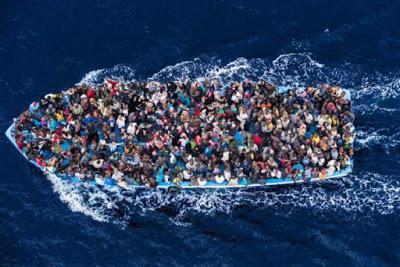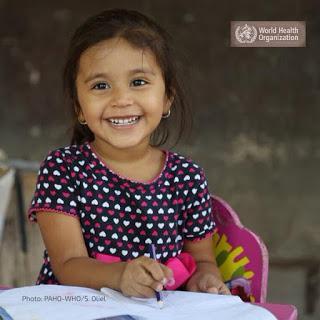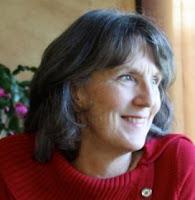
The Book
Walking Home is a compelling glimpse into the lives of emigrés in modern day America – refugees from genocide and war. The book journeys from loss and grief to survival and joy. The story hits the ground running, literally, with Kidane’s escape from Africa that reaches far into his future into Seattle, Washington. Kidane battles with survivor guilt while he struggles to settle into Seattle, a new life, relationship, school and work. He wants the American dream but is haunted by the past where he survived horrific violence in Africa, and was forced to leave everything and everyone he loved, behind.
Beautifully written, this poignant and intimate portrait of survivors is a must read for anyone seeking to understand the lives of emigrants in our evolving communities.
I'm glad Arleen Williams accepted to answer a few questions and even to give me some precious teaching tips! Here's our exchange. I hope you'll enjoy it .
My interview
 The new overwhelming flood of immigration to Europe is present–day breaking news. Thousands and thousands of desperate human beings are fleeing from their countries at war and coming to our countries in search of safety and freedom. Your book is a perfect chance to focus and reflect on this urgent matter. So many thanks, for accepting to answer my questions, Arleen!
The new overwhelming flood of immigration to Europe is present–day breaking news. Thousands and thousands of desperate human beings are fleeing from their countries at war and coming to our countries in search of safety and freedom. Your book is a perfect chance to focus and reflect on this urgent matter. So many thanks, for accepting to answer my questions, Arleen!It is my pleasure, Maria Grazia. Thank you for reading my work.
My first question is : what led you to write “Walking Home”?
I've been working with refugees and immigrants at a large urban community college for thirty years. As an ESL instructor, I find myself in frequent conversations with students dealing with the extreme hardships of leaving homelands they may never see again while also trying to adjust to the challenges of a new culture and language.
I feel fortunate for the trust my students give me, and I am very aware of how rare my experiences are, the experiences of dealing on a daily basis with what most only read in newspapers or see on the evening news. I wrote Walking Home, and entire The Alki Trilogy (Running Secrets and Biking Uphill) to share the insights I have gained.
How much has your work as a teacher influenced your writing it?
Walking Home is directly influenced by my work with immigrants and refugees. Kidane is an amalgamation of a number of young men who have shared their stories with me both through assigned compositions and private conversations. Some of those students entered the U.S. legally, others crossed the border from Mexico after years of treacherous migration from East Africa to Europe, then Central America to the United States. Some have learned English, continued their education and found rewarding work, often in the health care services. Others simply disappeared. A few faces come to mind. Does deportation and possible death explain those disappearances or were their immigration attorneys successful? I will likely never know.
 I still believe words can work magic. But, as a teacher to a teacher, do you really think tolerance and openness of mind can be taught at school? How?
I still believe words can work magic. But, as a teacher to a teacher, do you really think tolerance and openness of mind can be taught at school? How? I do. We teach through our words and behaviours. We model and discuss the tolerance we want our students and our children to learn. We teach by refusing to allow inappropriate behaviours - slurs or jokes, misunderstandings or ignorance - by drawing attention to them and talking them through. Ignoring something does not make it go away. We are all teachers. We teach not only as teachers, but also as parents and other family members, as neighbours and community members, as coaches, athletes and idols.
Back to “Walking Home”! Is Kidane, the protagonist of your book, a fictional character or is his story inspired to someone you met?
All my characters are fictional. They are also created by bits and pieces of people I have known, others I would like to know, and still others I never want to meet.
How can understanding the life and tribulations of migrants help us built a new awareness?
I believe that by understanding others, we become more empathetic, more human. In the United States, we often seem to forget that we are a nation of immigrants, that the only "true" Americans were the First Peoples. Is it just that we now insist on building walls and locking the door behind us? Perhaps we need to take a deeper look at the conditions that are causing these horrific migrations and see what can be done to make life safe in homelands across the globe.
Is there any specific message you wanted to convey through your story?
I can't say I really thought about a "message." Kidane and Gemi and the other characters simply appeared and demanded that their story be told. That said, I hope readers enjoy a glimpse into worlds they might not be familiar with and become a bit more open the next time they have dealings with a sales clerk with an accent or an elder care specialist wearing a headscarf.
What can each of us do for all the Kidanes in the world? I think we can all be more open to and appreciative of people different from ourselves. We can be curious and empathetic. And we can stop allowing ourselves to be controlled and manipulated by fear.
Let’s go back to present-day international issues. The majority of the latest arrivals come from countries deeply traumatised by dictatorship and violence. How blurred is the distinction between a refugee and migrant?These words are very difficult, even more so when we add illegal and alien into the mix. Ruud Lubbers of the UN High Commissioner for Refugees states the distinction in this way:"Migrants, especially economic migrants, choose to move in order to improve the future prospects of themselves and their families. Refugees have to move if they are to save their lives or preserve their freedom." The challenge I see with that definition lies in the rarity of granting refugee status to anyone coming from an ally nation.
How can we overcome our prejudices and fears and see the world as a place with no boundaries? I wish I knew. Education. Communication. I suppose I'd go back to my prior response and say that we need to teach not just tolerance, but empathy and appreciation of cultures and peoples who are different from ourselves. And hopefully we can stop allowing ourselves to be controlled by fear.
Do you think it will ever be possible to really go from borders to bridges? My mother used to say that change begins at home. There's also the ripple effect of the pebble thrown in the pond. Clichés, I know, but perhaps some truth lies there as well. Perhaps bridges are built when each of us, individually and privately, reaches out to others. Not for fame or riches. Not to save the world, but just to make one new friendship, to make one person smile.
I read this sentence in a report from Calais, where thousands of refugees try desperately to find a way to reach Britain every day: “However tall the fences, however sharp the barbed wire, however fierce the dogs, however hostile the public opinion, they will keep coming”. How does such statement resonate with you? As absolute truth. What seems to be ignored in so many refugee/immigrant discussions and media coverage is that people don't leave their homes and cultures, families and friends, or risk their lives and those of their children without good reason. Ensconced in our comfortable lives, we seem unable to imagine the horrors of life in the worlds from which folks are desperately trying to escape. When we wrap ourselves in fear of losing the comforts that we enjoy, and we lose our humanity.
I’d love to make my students work on your book. I teach English as a foreign language to Italian teenage students. Any suggestion on which pages/excerpts to use? (they are not proficient enough to read a whole book yet!) Any suggestions in general?Thank you for your interest in using my book in your classes! I hope all my books provide plenty of stimulus for meaningful conversation.Walking Homeis Book 3 of The Alki Trilogy, which also includes Running Secrets and Biking Uphill. All three books deal with cross-cultural, multi-generational friends, and redemption. Each novel is a stand-alone, but I connected them by character, setting and, of course, theme.I would suggest using the opening chapter of Walking Home in your classes. Who knows, your students' interest may inspire them to try more!Another idea would be to take a look at the books and curricular materials at No Talking Dogs Press (www.notalkingdogspress.com). My writing partner, Pamela Hobart Carter, and I have written a dozen short books in easy English for adults (and young adults!). These are not textbooks. They are easy to read, inexpensive, mini novels that my ESL students truly enjoy!

Arleen Williams is a Seattle novelist, memoirist, and co-author of a dozen short books in easy English for adults. She teaches English as a Second Language at South Seattle College and has worked with immigrants and refugees for close to three decades. To learn more, please visit www.arleenwilliams.comand www.notalkingdogspress.comCheck out Walking Home on goodreads and on amazon.com

